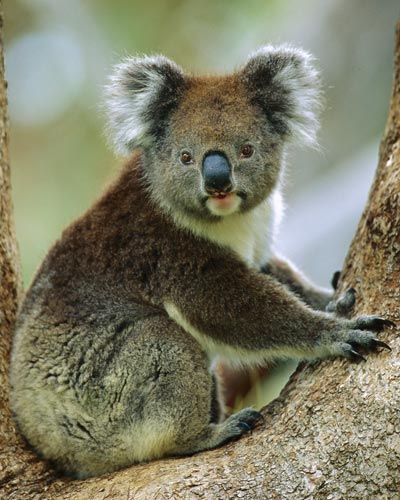
Like all marsupials, koalas have pouches for their young. But a koala pouch is different from a kangaroo pouch. A kangaroo pouch opens upward, while a koala pouch opens to the rear. See which animal you might confuse with a kangaroo next.
Advertisement

The wallaby may grow to be 4.5 feet (1.4 meters) long, including a 29-inch (74-centimeter) tail, but some wallabies are as small as house cats. Find out which marsupials are found in the Americas next.

Opossums are distantly related to Australian marsupials such as kangaroos and phalangers (often called Australian opossums). See one of Australia's most famous marsupials next.
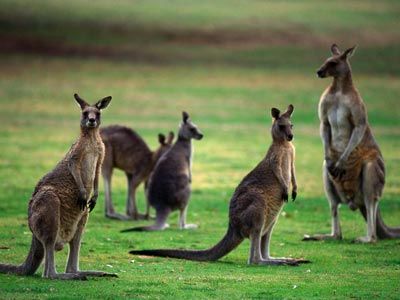
Kangaroos are the only large mammals to use pogo-stick-styled locomotion. A single kangaroo hop can propel it 25 feet (7.6 meters) forward and 6 feet (1.8 meters) high. Discover a devilish marsupial next.
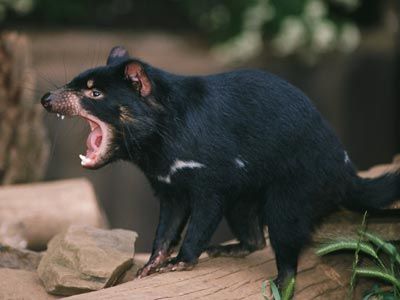
Although it was once found on the Australian mainland, the Tasmanian devil is now found only in Tasmania. The name "devil" is derived from its seemingly ferocious expression and dark color. You'll have to look up to see this next marsupial.
Advertisement
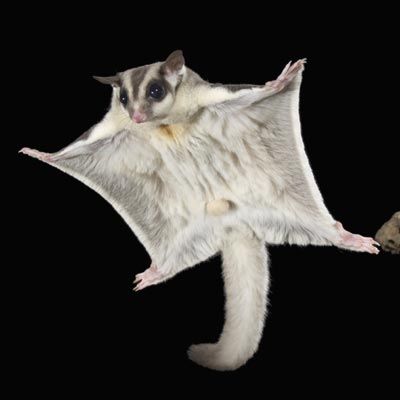
Sugar Gliders, which are actually another type of possum, use their teeth to tap eucalyptus trees for their sap. Which marsupial is also known as a "native cat"? Find out next.
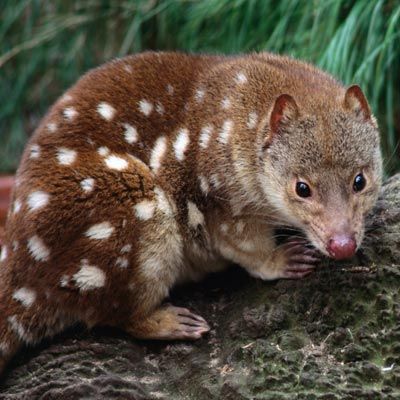
Quolls rest in tree hollows during the day and at night they feed on insects, rodents and occasionally, domestic chickens. Which marsupial is somewhere in between a kangaroo and a wallaby? Find the answer next.

The name "wallaroo" is a combination of wallaby and kangaroo. Wallaroos are larger than wallabies but smaller than gray and red kangaroos. See a pygmy-size marsupial next.
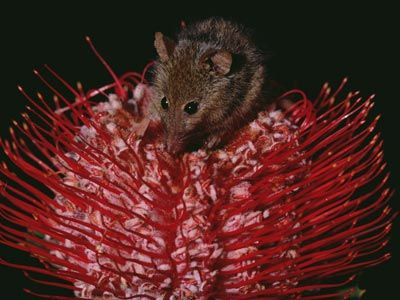
This pygmy honey possum (Tarsipes spenserae) is feeding on flowering scarlet banksia (Banksia coccinea) in Western Australia. Pygmy possums usually weigh less than 2 ounces (57 grams). See a relative of the Tasmanian devil and quoll next.
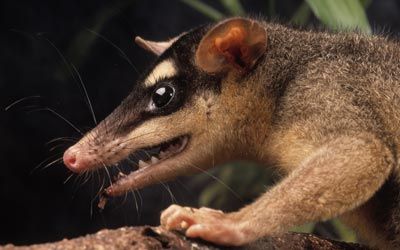
An endangered mulgara is hunting and foraging on a sand dune in Australia. Most marsupials live in Australia or its nearby islands. See which marsupial is also known as a "banded anteater" next.
Advertisement
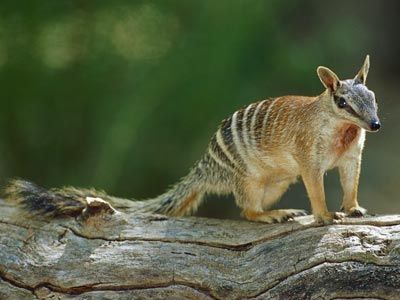
This numbat (Myrmecobius fasciatus) loves the taste of termites and ants. Which marsupial is also known as the "flying mouse"? Find this creature next.
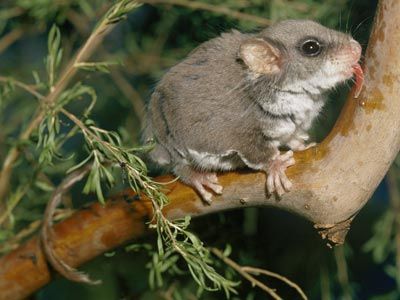
A feather-tail glider feeds on a tree branch. These marsupials are the world's smallest gliding mammals. See another marsupial that's related to the kangaroo next.
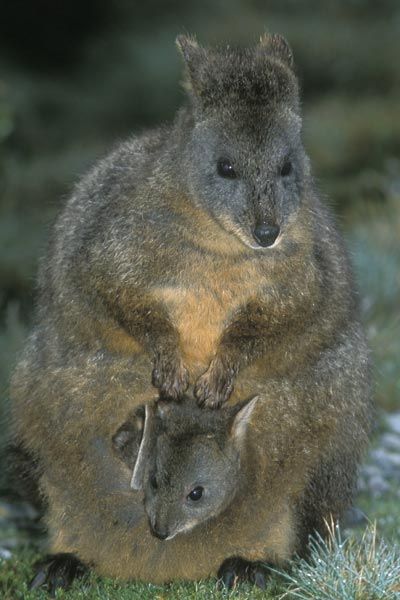
Most female marsupials, like this pademelon, carry and nurse their young inside an abdominal flap of skin called the abdominal pouch, or marsupium. Which marsupial is an expert tunnel-digger? Find out next.
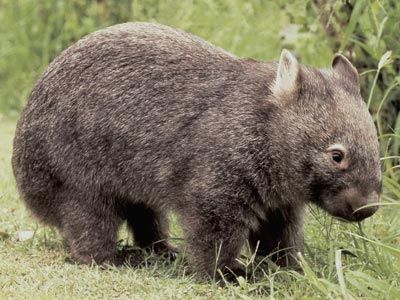
The wombat sleeps in an underground burrow during the day, emerging at night to feed on grass, roots, bark and fungi. Some wombat burrow systems measure more than 100 feet (30 meters) in length! Find another burrower next.

An endangered greater bilby lands after making a small leap. This marsupial is related to the bandicoot. Which kangaroo enjoys living life high in the trees? Discover this marsupial next.
Advertisement

The tree kangaroo can leap 40 feet (12.2 meters) from tree to tree. Tree kangaroos typically grow to be about 4 feet (1.2 meters) long, including a 24-inch (61-centimeter) tail. Next, see which wallaby hops among the rocks.
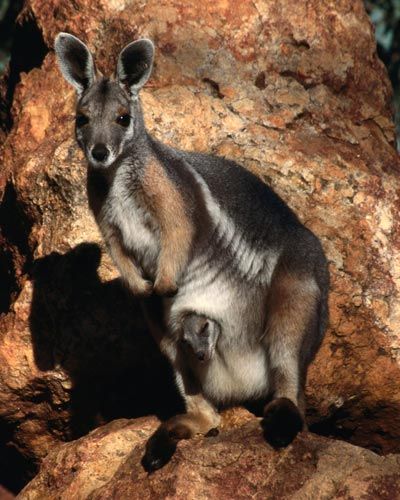
Rock wallabies have thick, rough pads on the bottoms of their feet. The pads protect their feet and allow the animals to grip hard, jagged rocks. Finally, see a marsupial that's lacking melanin next.

This albino koala would typically have ashy gray fur. Researchers have found that albinism occurs in one out of every 10,000 mammals.